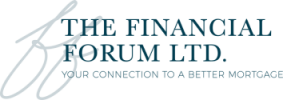
Have interest rates fallen? Or do you expect them to go up? Has your credit score improved enough so that you might be eligible for a lower-rate mortgage? Would you like to switch into a different type of mortgage? How about consolidating some high interest debt or perhaps you require some funds for renovations, child’s education, etc.
The answers to these questions will influence your decision to refinance your mortgage. But before deciding, you need to understand all that refinancing involves. Your home may be your most valuable financial asset, so you want to be careful when choosing a lender or broker and specific mortgage terms. Remember that, along with the potential benefits to refinancing, there are also costs.
When you refinance, you pay off your existing mortgage and create a new one. You may even decide to combine both a primary (first) mortgage and a second mortgage into a new loan. Refinancing may remind you of what you went through in obtaining your original mortgage, since you may encounter many of the same procedures—and the same types of costs—the second time around.
Why consider refinancing?
Lowering your interest rate
The interest rate on your mortgage is tied directly to how much you pay on your mortgage each month—lower rates usually mean lower payments. You may be able to get a lower rate because of changes in the market conditions or because your credit score has improved. A lower interest rate also may allow you to build equity in your home more quickly.
For example, compare the monthly payments (for principal and interest) on a 5-year fixed-rate loan of $200,000 at 2.99% and 3.49%.
Monthly payment @ 2.99% $945.57
Monthly payment @ 3.49% $997.49
The difference each month is $51.92
But over a year’s time, the difference adds up to $623.04
Over 10 years, you will have saved $6,230.40
Adjusting the amortization (length) of your mortgage
Increase the term of your mortgage: You may want a mortgage with a longer term to reduce the amount that you pay each month. However, this will also increase the length of time you will make mortgage payments and the total amount that you end up paying toward interest.
Decrease the amortization of your mortgage: Shorter amortized mortgages—for example, a 25-year amortization instead of a 30-year amortization. Plus, you pay off your loan sooner, further reducing your total interest costs. The trade-off is that your monthly payments usually are higher because you are paying more of the principal each month.
For example, compare the total interest costs for a fixed-rate loan of $200,000 at 3% for 25 years with a fixed-rate loan at 3% for 30 years, both over a 5-year term.
Monthly payment Total interest (5 years)
25-year amortization @ 3.0% $946.49 $27,738.70
30-year amortization @ 3.0% $841.21 $28,224.68
Changing from an adjustable-rate mortgage to a fixed-rate mortgage
If you have an adjustable-rate mortgage, or ARM, your monthly payments will change as the interest rate changes. With this kind of mortgage, your payments could increase or decrease.
You may find yourself uncomfortable with the prospect that your mortgage payments could go up. In this case, you may want to consider switching to a fixed-rate mortgage to give yourself some peace of mind by having a steady interest rate and monthly payment. You also might prefer a fixed-rate mortgage if you think interest rates will be increasing in the future.
Getting an ARM with better terms
If you currently have an ARM, will the next interest rate adjustment increase your monthly payments substantially? You may choose to refinance to get another ARM with better terms. For example, the new loan may start out at a lower interest rate (greater discount based on the prime lending rate). Or the new loan may offer a “cap”, which means that the interest rate cannot exceed a certain amount.
Getting cash out from the equity built up in your home
Home equity is the dollar-value difference between the balance you owe on your mortgage (s) and the value of your property. When you refinance for an amount greater than what you owe on your home, you can receive the difference in a cash payment (this is called a cash-out refinancing). You might choose to do this, for example, if you need cash to make home improvements or pay for a child’s education.
Remember, though, that when you take out equity, you own less of your home. It will take time to build your equity back up. This means that if you need to sell your home, you will not put as much money in your pocket after the sale.
If you are considering a cash-out refinancing, think about other alternatives as well. You could shop for a home equity loan or home equity line of credit instead.
STEP BY STEP GUIDANCE!
- Your Financial Forum advisor will help establish a game plan to help you to achieve your short and long-term goals.
- We’ll keep you informed of industry trends and home financing options along the way. We’re always tracking current mortgage rates, and various options available in the marketplace
- We are always available to deal with any of your questions
- We grow by referral, therefore treating you right is the most important thing to us.
If you think you’re ready to get started with refinancing, let us know and we can set up a free consulting session for you.
Have any questions, need any advice? Visit us at www.thefinancialforum.ca. Email us at mortgages@thefinancialforum.ca. Call us at (905) 265-0246.
VERICO The Financial Forum Ltd.
“Your Connection To A Better Mortgage”
Together, We Make Mortgages Easy!





